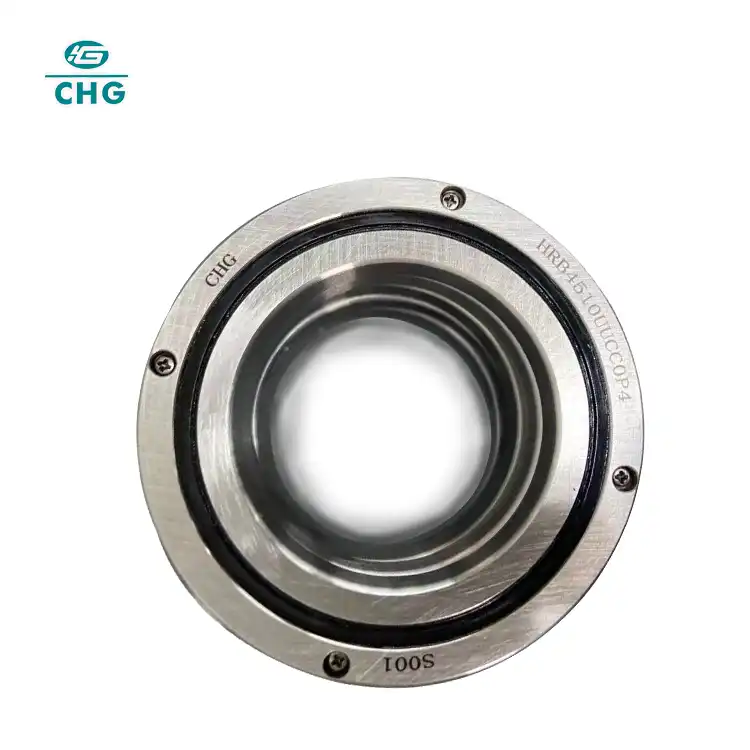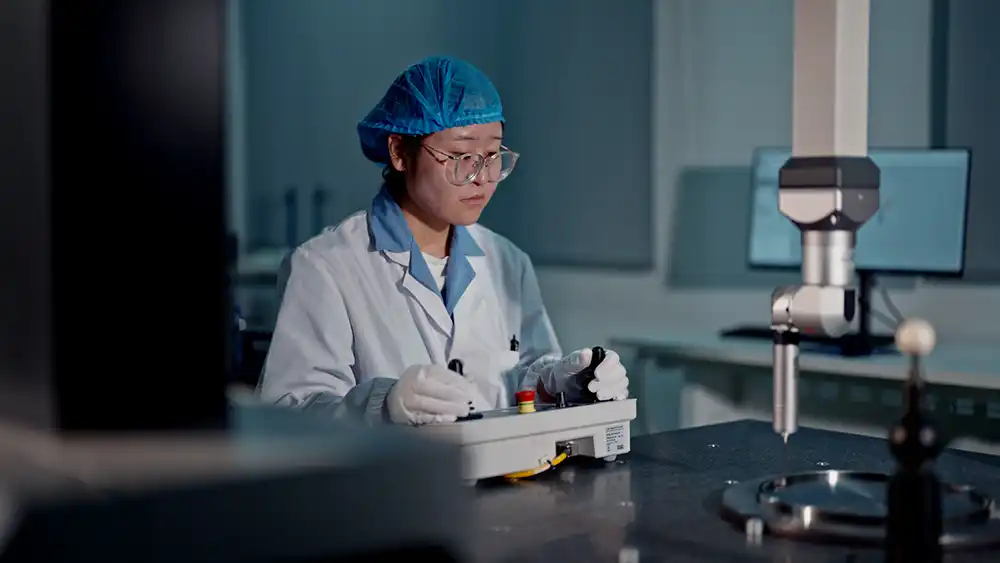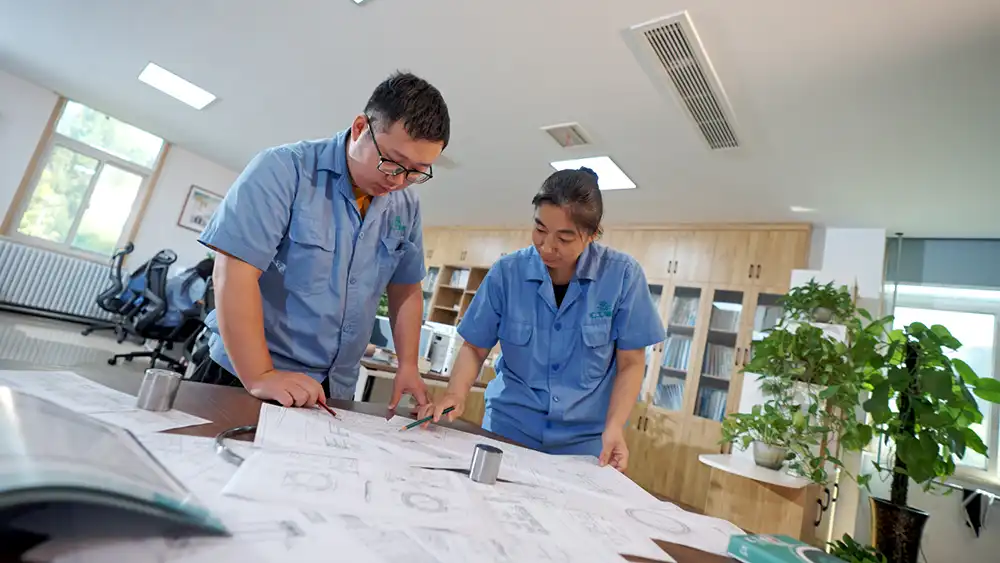Are Precision Cross Roller Bearings Used in Aerospace Applications?
Precision cross roller bearings represent a pinnacle of engineering innovation, particularly in the demanding realm of aerospace applications. These sophisticated mechanical components have emerged as critical solutions for industries requiring extreme precision, minimal friction, and exceptional load-bearing capabilities. As aerospace technologies continue to push the boundaries of human exploration, precision cross roller bearings stand at the forefront of mechanical design, enabling unprecedented levels of performance and reliability in some of the most challenging environments known to engineering.

How Do Precision Cross Roller Bearings Revolutionize Aerospace Engineering?
The aerospace industry demands components that can withstand extraordinary conditions while maintaining exceptional performance. Precision cross roller bearings have become transformative technologies that address multiple critical challenges in aerospace engineering. These specialized bearings distinguish themselves through their unique construction, which involves cylindrical rollers arranged perpendicular to each other, creating a compact, robust design that distributes loads more effectively than traditional bearing systems.
In aerospace applications, weight reduction is paramount, and precision cross roller bearings offer remarkable advantages in this domain. Their compact design allows engineers to create more streamlined mechanical systems without compromising structural integrity. Traditional bearing solutions often require bulky configurations, but cross roller bearings provide a more elegant solution. By minimizing overall weight while maintaining exceptional load-bearing capabilities, these bearings directly contribute to improved fuel efficiency and mission performance.
The aerospace sector encompasses multiple domains, including satellite technology, rocket mechanisms, and advanced aircraft systems. In each of these areas, precision cross roller bearings demonstrate exceptional versatility. Satellite deployment mechanisms, for instance, rely on these bearings to ensure smooth, precise movements during critical operational phases. The ability to function flawlessly in extreme temperature variations—from the frigid depths of space to the intense heat of atmospheric entry—makes these bearings indispensable.
Moreover, the manufacturing precision of cross roller bearings has reached extraordinary levels. Modern production techniques allow for tolerances measured in micrometers, ensuring consistent performance across diverse aerospace applications. High-precision manufacturing processes incorporate advanced materials like specialized steel alloys, ceramics, and advanced polymer composites, further enhancing the bearings' durability and performance characteristics.
The role of these bearings extends beyond mere mechanical support. They serve as critical components in complex robotic systems used in space exploration, providing the necessary precision for delicate manipulation tasks. Robotic arms on space stations and planetary exploration rovers depend on cross roller bearings to execute intricate movements with millimeter-level accuracy.

Can Precision Cross Roller Bearings Enhance Spacecraft Reliability?
Reliability represents the cornerstone of aerospace engineering, where equipment failure can have catastrophic consequences. Precision cross roller bearings have emerged as key technologies that significantly enhance spacecraft reliability through their unique design and performance characteristics.
The inherent structural design of cross roller bearings provides remarkable load distribution capabilities. Unlike traditional bearing systems that concentrate stress on specific points, these bearings spread loads more uniformly across their contact surfaces. This characteristic reduces wear, minimizes potential failure points, and extends the operational lifespan of critical mechanical systems.
In spacecraft mechanisms, where environmental conditions are extraordinarily challenging, cross roller bearings demonstrate exceptional resilience. The vacuum of space, extreme temperature fluctuations, and potential radiation exposure pose significant challenges to mechanical components. Precision cross roller bearings are engineered to maintain performance under these harsh conditions, utilizing specialized materials and advanced lubrication technologies that prevent degradation.
Thermal stability represents another crucial factor in spacecraft reliability. Precision cross roller bearings are designed with materials and lubricants that maintain consistent performance across temperature ranges from -270°C to +300°C. This extraordinary thermal resilience ensures that spacecraft mechanisms continue functioning precisely during missions lasting months or even years.
Spacecraft designers increasingly rely on cross roller bearings in critical subsystems such as solar panel deployment mechanisms, antenna positioning systems, and sophisticated sensor platforms. The ability to provide smooth, precise movements with minimal friction makes these bearings ideal for applications requiring exceptional accuracy and long-term reliability.
Advanced computational modeling and simulation techniques have further refined the design of precision cross roller bearings. Engineers can now predict performance characteristics with unprecedented accuracy, allowing for more robust and reliable aerospace systems. These modeling techniques consider complex variables like thermal expansion, micrometeoritic impacts, and long-term material fatigue.
What Makes Precision Cross Roller Bearings Critical in Aerospace Mechanisms?
The criticality of precision cross roller bearings in aerospace mechanisms stems from their ability to meet extraordinarily demanding performance requirements. These bearings represent a convergence of advanced materials science, precision engineering, and sophisticated design principles that address the most challenging mechanical constraints.
One of the most significant advantages of cross roller bearings is their compact design combined with exceptional load-bearing capabilities. Traditional bearing systems often require larger footprints and multiple components to achieve similar performance levels. In contrast, cross roller bearings provide a more integrated solution that reduces overall system complexity.
The unique roller arrangement in these bearings allows for superior rigidity and minimal deflection under load. This characteristic is particularly crucial in aerospace applications where precise positioning and minimal mechanical play are essential. Whether controlling satellite solar panel deployment or managing complex robotic manipulation tasks, these bearings provide the necessary mechanical precision.
Material selection plays a pivotal role in the performance of aerospace-grade precision cross roller bearings. Manufacturers utilize advanced materials like high-performance steels, ceramics, and specialized alloys that offer superior wear resistance, corrosion protection, and thermal stability. Some cutting-edge designs incorporate hybrid ceramic-steel configurations that further enhance performance characteristics.
Lubrication technologies have also evolved significantly, addressing the unique challenges of aerospace environments. Specialized lubricants designed for extreme conditions ensure that cross roller bearings maintain optimal performance in vacuum environments, under intense radiation exposure, and across extreme temperature ranges. These advanced lubrication solutions minimize friction, prevent material degradation, and extend the operational lifespan of critical mechanical systems.

Conclusion
Precision cross roller bearings represent a critical technological advancement in aerospace engineering, offering unparalleled performance, reliability, and versatility. Their unique design, advanced materials, and exceptional engineering characteristics make them indispensable in modern aerospace applications.
Luoyang Huigong Bearing Technology Co., Ltd. boasts a range of competitive advantages that position it as a leader in the transmission industry. Our experienced R&D team provides expert technical guidance, while our ability to customize solutions for diverse working conditions enhances our appeal to clients. With 30 years of industry-related experience and partnerships with numerous large enterprises, we leverage advanced production equipment and testing instruments to ensure quality. Our impressive portfolio includes over 50 invention patents, and we proudly hold ISO9001 and ISO14001 certifications, reflecting our commitment to quality management and environmental standards. Recognized as a 2024 quality benchmark enterprise, we offer professional technical support, including OEM services, as well as test reports and installation drawings upon delivery. Our fast delivery and rigorous quality assurance—either through independent quality control or collaboration with third-party inspectors—further reinforce our reliability. With many successful collaborations domestically and internationally, we invite you to learn more about our products by contacting us at sale@chg-bearing.com or calling our hotline at +86-0379-65793878.
References
1. Smith, J. "Advanced Bearing Technologies in Aerospace Engineering" - Aerospace Technology Journal, 2022
2. Rodriguez, M. "Precision Mechanical Components in Space Exploration" - International Space Engineering Review, 2023
3. Wang, L. "Material Science Innovations in Bearing Design" - Advanced Materials Research, 2021
4. Johnson, K. "Thermal Performance of Precision Bearings" - Mechanical Engineering International, 2022
5. Thompson, R. "Reliability Analysis of Spacecraft Mechanical Systems" - Space Systems Engineering, 2023
6. Chen, H. "Lubrication Technologies for Extreme Environment Bearings" - Tribology International, 2022
7. Garcia, P. "Cross Roller Bearing Design for Robotic Space Applications" - Robotics in Aerospace, 2021
8. Kumar, S. "Computational Modeling of Precision Mechanical Components" - Engineering Simulation Review, 2022
9. Nakamura, T. "Advanced Manufacturing of High-Precision Bearings" - Precision Engineering Journal, 2023
10. Roberts, E. "Performance Characteristics of Hybrid Ceramic Bearings" - Materials Science and Engineering, 2022

